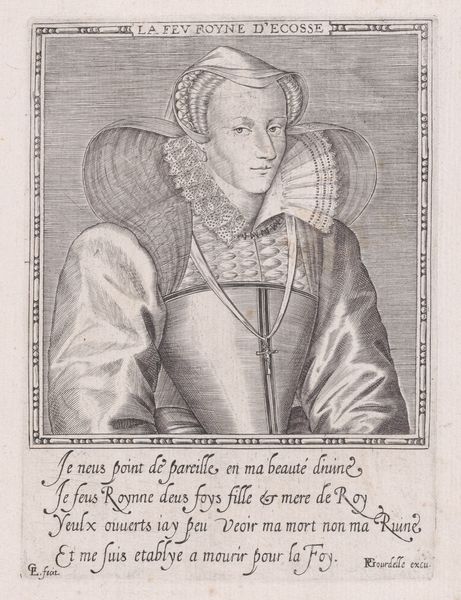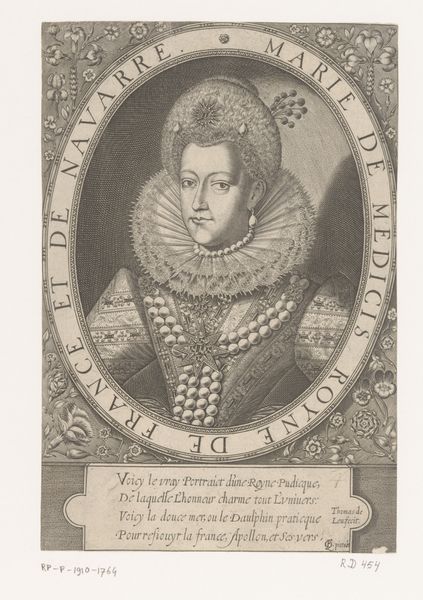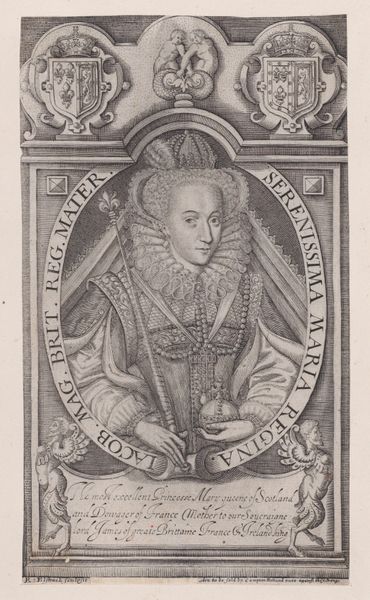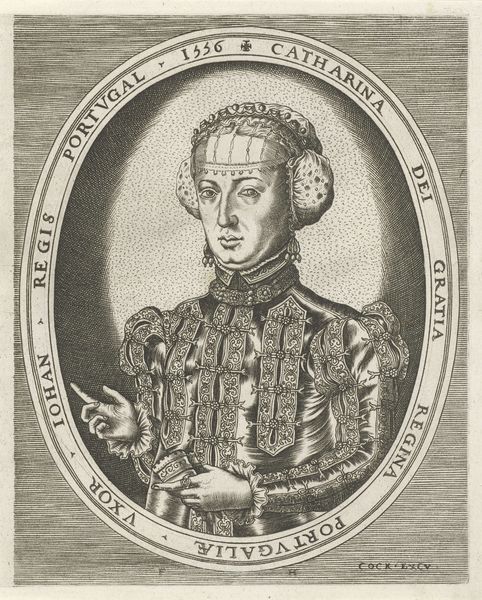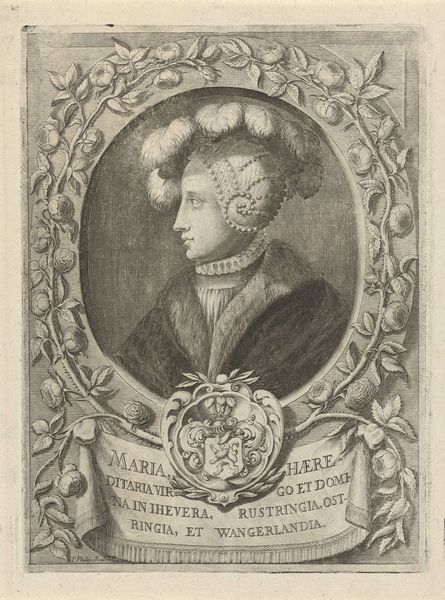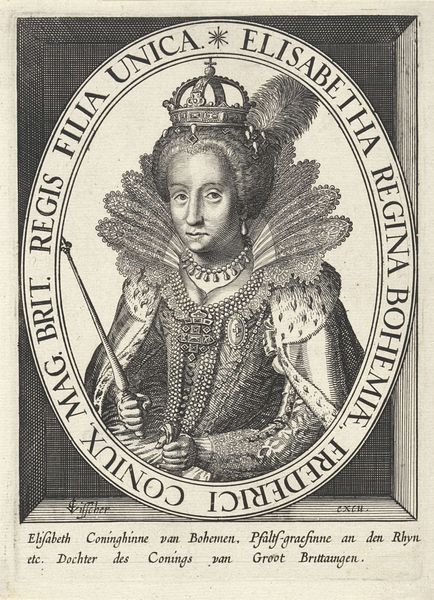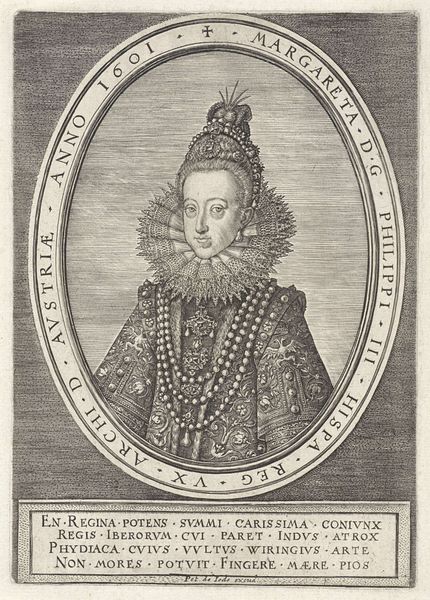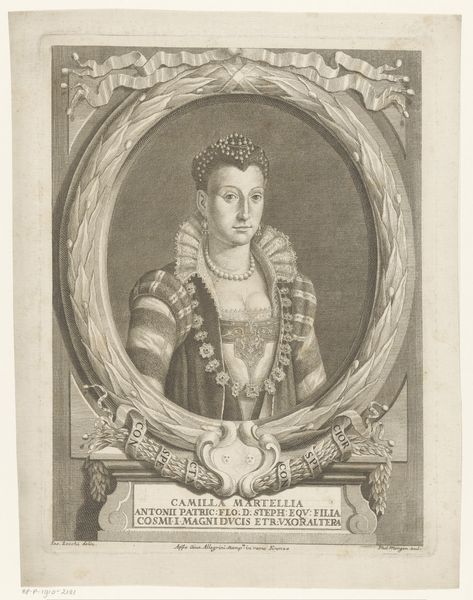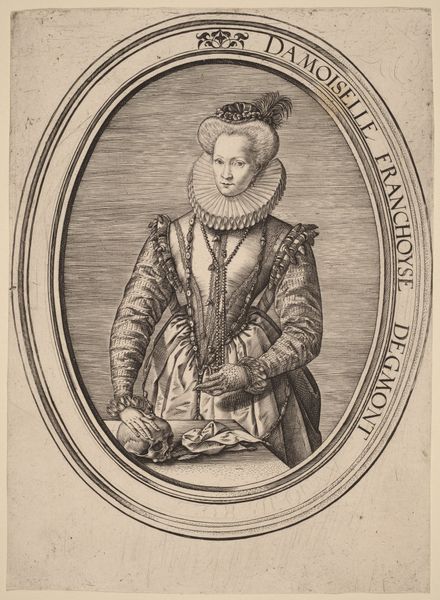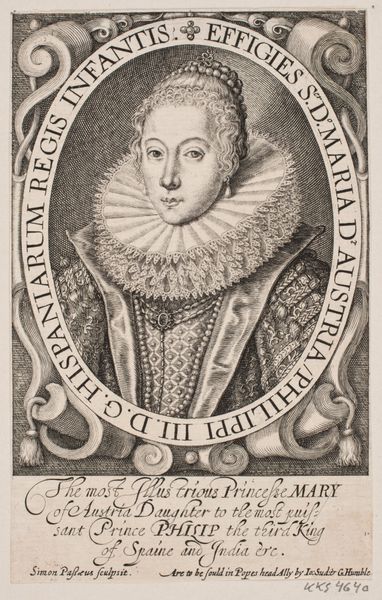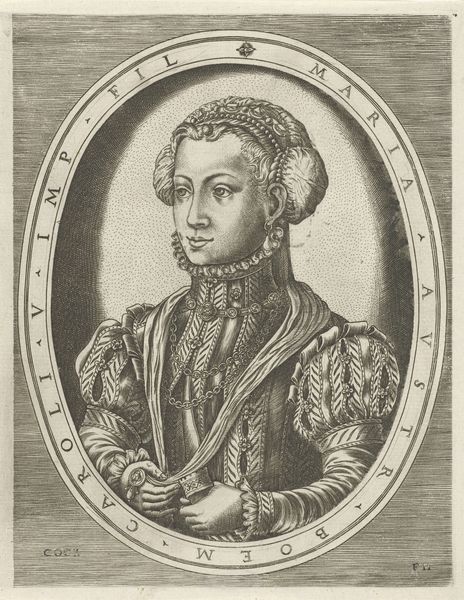
print, engraving
#
portrait
# print
#
mannerism
#
portrait drawing
#
history-painting
#
northern-renaissance
#
engraving
Dimensions: plate: 15.2 x 9.8 cm (6 x 3 7/8 in.) sheet: 24.8 x 18.1 cm (9 3/4 x 7 1/8 in.)
Copyright: National Gallery of Art: CC0 1.0
Curator: Immediately I’m struck by how… contained she looks. Like a porcelain doll, almost, trapped in this intricate web of lace and pearls. Editor: Indeed, the portrait, Jeanne d’Albret, Queen of Navarre created in 1597 by Thomas de Leu captures the queen within the rigid confines of both her status and the artistic conventions of the time. Look at the Northern Renaissance detail rendered via engraving; it is so crisp. Curator: That pearl collar! It looks like it's simultaneously protecting her and strangling her. All those layers—fabric, jewelry—are sheathed around her as if trying to bury her from sight. Editor: Her clothing functions as armour; power through austerity and conspicuous wealth were frequently depicted at that time, as her legacy demonstrates through legal and educational reform, as well as solidifying the Protestant Reformation as an ideologue. She’s so much more than that ornamental presentation. Curator: Of course, of course. Still, I wonder what it felt like to carry all that on your shoulders, metaphorically and, well, literally in this portrait. Doesn’t it remind you of certain contemporary figures burdened with expectation? Editor: Absolutely, especially in terms of contemporary society and media; Queen Jeanne walked the razor’s edge as a woman ruler navigating religious war and constant male aggression. It would seem the face of a queen would represent an uneasy truce to that of a powerful monarch. Curator: It is fascinating how much stories this portrait quietly tells, isn't it? All that’s unsaid screams so much more to me than any bombastic declaration could. The secrets behind that reserved gaze—that’s the art’s lasting power. Editor: And for me, seeing Jeanne represented here reignites important discussion. How women wield power—that intersectional, often obscured narrative — is made beautifully apparent in Thomas de Leu’s print.
Comments
No comments
Be the first to comment and join the conversation on the ultimate creative platform.
